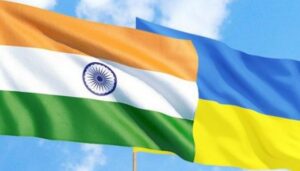
Pivdenny Mining and Processing Plant (Dnipropetrovsk region) in 2021 increased output of iron ore concentrate by 6.1% compared to the previous year, to 13.582 million tonnes.
According to the company’s official information, in December 2021 the plant produced 1.318 million tonnes of iron ore concentrate, which is 23.9% more than in the same period of 2020.
Earlier, CEO of Pivdenny Mining Kostiantyn Fedin said in his New Year’s greetings that the plant had reached such a production indicator for the first time in the last 30 years.
Pivdenny Mining and Processing Plant is one of the main producers of iron ore raw materials in Ukraine – concentrate. It is engaged in mining and processing of ferruginous quartzites to obtain iron ore concentrate.

The National Bank of Ukraine (NBU) has updated the requirements for confirming the sources of the formation of subordinated debt, financial assistance from shareholders and capital instrument with the terms of write-off/conversion, the NBU press service said on Tuesday.
According to the report, the right of the regulator to establish requirements for the sources of regulatory capital is provided for by amendments to Article 30 of the law on banks and banking activities. The changes approved by NBU Resolution No. 159 dated December 29, 2021 come into force on January 5.
In particular, banks, to include components in the regulatory capital, shall submit documents confirming the sources of their formation, taking into account the requirements of the regulation on licensing of banks, the NBU said in the press release.
In addition, the requirements for the interest rate, at which funds will be attracted on the terms of subordinated debt, have been updated, in particular, the bank will justify its size, the NBU said.

In 2021, Ukrainian cities purchased 170 trolleybuses (including only three used ones), which is almost half as many as in 2020, when 337 vehicles were purchased (including five used ones), AllTransUA reported on Facebook.
According to a report, such a drop in sales may be due to the fact that in 2021 it was mainly the completion of deliveries of 2020 (as part of the trolleybus fleet renewal programs financed by international financial institutions), and new supplies to Kherson and Mykolaiv began only at the end of the year, as well as, in general, the completion of the first wave of EBRD and EIB loan programs.
Kharkiv was the leader in the purchase of trolleybuses, which, in addition to Bogdan T701 trolleybuses under loan programs of IFIs, received leased trolleybuses PTS-12 of the Brovary-based manufacturer Polytechnoservice (in Belarusian bodies MAZ-203) – a total of 59 trolleybuses. This is followed by Mykolaiv, Poltava, Sumy, Zhytomyr, and Lutsk, which bought trolleybuses at the expense of IFIs.
In the structure of financing, purchases at the expense of IFI programs accounted for 68% of cars, and leasing was used only in Kharkiv and amounted to 22%. Budget purchases amounted to only 9% – this year, only Chernihiv (Etalon T12110) and Vinnytsia (PTS-12 with additional assembly at the facilities of the city public transport operator) bought trolleybuses for funds from local budgets.
In addition, for the first time, funding from the state budget was used – at its expense, three Dnipro T203 trolleybuses (in Belarusian bodies) were purchased for Severodonetsk.
In the structure of the supply of new trolleybuses, trolleybuses from Belarusian car sets – PTS-12 and Dnipro T203, assembled on the basis of MAZ and AKSM-321 (D) bodies, assembled at the BKM-Ukraine enterprise from car sets manufactured by Belkommunmash – continued to dominate (54%). Last year, the share of these vehicles was almost 70%.
Bogdan produced 71 trolleybuses (43%) – almost the same as in 2020, another 2% of all sales were for Etalon trolleybuses.
Three used Škoda 24Tr low-floor trolleybuses were delivered to Ternopil.
AllTransUA also analyzed the tram car market of last year, which, according to their data, did not become a turning point for this market (55 trams were delivered versus 39 a year earlier), having continued the trends of the last few years, when some cities bought used equipment, some built new cars using bodies and old bogies, and some bought a small number of modern wagons.
“This year, for the first time in several years, we have in statistics a significant number of new cars [14 units] – thanks to the supply of Polish Pesa cars, Ukrainian Electron and Tatra-Yug cars to Kyiv and Electron cars – to Lviv. Pesa cars and one Electron car were delivered to Kyiv as part of the 2020 contracts for budget funds, and Tatra-Yug cars to Kyiv and Electron cars to Lviv are supplied as part of IFI loan programs,” the report says.
As reported, 20 Tatra-Yug cars will be delivered to Kyiv under the contract (of which three were delivered this year), and 10 Electron cars will be delivered to Lviv (three were delivered).
AllTransUA notes that this year the statistics of deliveries of new trams can significantly improve due to the receipt of the remaining cars in Kyiv and Lviv, as well as supplies to Dnipro (at the expense of the regional budget) and Kryvy Rih (at the expense of IFIs), and the long-awaited promotion of car purchases for Odesa with IFI funding.

Kazakhstan’s President Kassym-Jomart Tokayev has announced that he will now lead the national security council, which was previously led by former head of state Nursultan Nazarbayev.
“As the head of state and, from this day, as chairman of the Security Council I intend to take maximally tough action,” Tokayev said in a statement broadcast on the state television channel Khabar 24 on Wednesday.
Rallies against a sharp rise in liquefied gas prices first started in Zhanaozen, a city in the Mangistau region in western Kazakhstan, on January 2, then escalating into mass protests with economic and political demands across the country. Clashes between protesters and the police occurred in Almaty on January 4.
Kazakh President Kassym-Jomart Tokayev signed a decree early on Wednesday morning, introducing a state of emergency and a curfew, from 11:00 p.m. to 7:00 a.m., in Almaty and the Mangistau and Almaty region until January 19.
The Kazakh government resigned in the early hours of Wednesday as well.

Ukraine and India have significant potential for cooperation in the military-technical sphere, in matters of energy security and overcoming the energy crisis, as well as combating the COVID-19 pandemic, Secretary of the National Security and Defense Council of Ukraine (NSDC) Oleksiy Danilov said at a meeting with Ambassador of India to Ukraine Partha Satpathy.
According to the NSDC press service on Wednesday, Danilov also named the joint efforts in the field of climate change and environmental protection as priority areas of bilateral cooperation. “We are on the verge of great shifts in bilateral cooperation,” the NSDC secretary said.
The parties discussed the prospects for practical cooperation, in particular, in the field of security, agriculture, pharmaceutical and titanium industries and others, and also noted the importance of developing scientific and technical cooperation.
The meeting took place on the occasion of completion of a diplomatic term of Ambassador Satpathy in Ukraine.

President of Ukraine Volodymyr Zelensky has signed law No. 1967-IX “On amendments to certain legislative acts of Ukraine regulating the issues of transplantation of anatomical materials to a person.”
“The document is intended to resolve the issue of payment for transplants. In particular, the law stipulates that the state pays for all transplants and they are free for the patient. It is also noted that the tariffs fully cover the costs of hospitals for such transactions,” the press service of the head of state said.
In addition, the document provides that the selection of a donor-recipient pair will be carried out by the Unified State Transplantation System, which is completely independent of human influence and independently conducts such a selection according to certain criteria.
The issue of the possibility of providing lifetime consent or disagreement to donation through electronic resources is also being resolved.
The law comes into force on the day following the day of its publication, except for paragraphs 11 and 12 of subparagraph 7 of provision 4 of section I which come into force on December 1, 2022.
As reported, bill No. 5831 was adopted by the Verkhovna Rada at the second reading on December 16. It was supported by 305 deputies.
As a result of the adoption of the bill, information about potential donors of hematopoietic stem cells is entered into the State Information System for Hematopoietic Stem Cell Transplantation. Also, a written refusal from a previously agreed transplant does not require notarization or confirmation by a notary of the authenticity of the signature.
The authors of the document expect that the adoption of this law will regulate certain components of transplantation, which in turn will contribute to an increase in the efficiency and number of such operations in Ukraine.